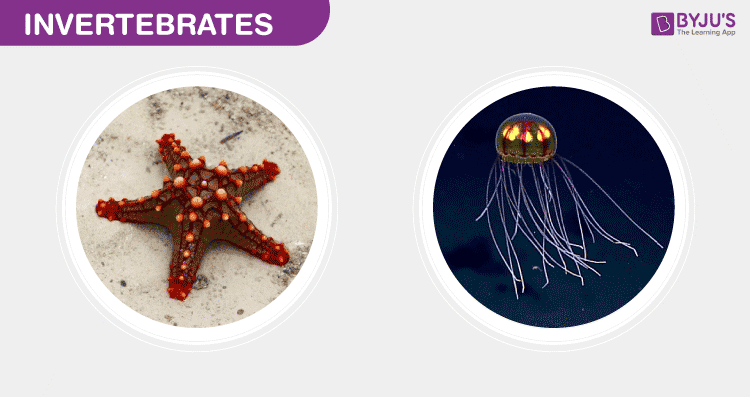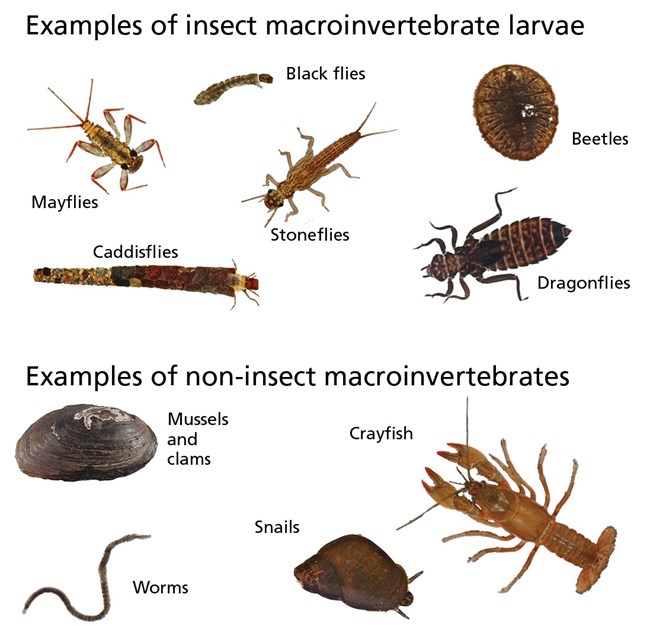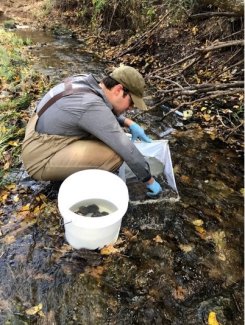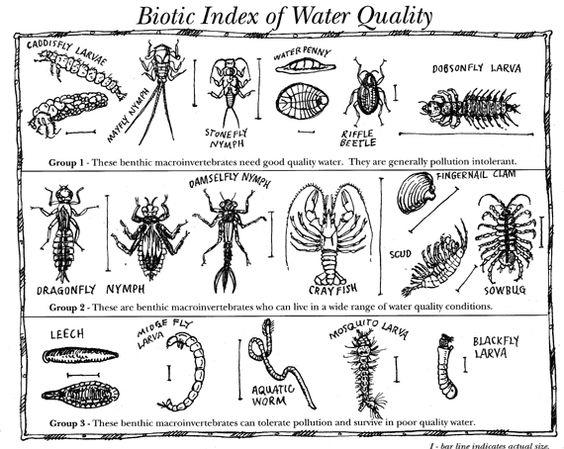Topic invertebrates definition biology: Delve into the intriguing realm of invertebrates, a diverse group of spineless organisms that play vital roles in our ecosystems. Explore their unique characteristics and immense biodiversity in this comprehensive guide to invertebrate biology.
Table of Content
- What is the definition of invertebrates in biology?
- What are Invertebrates?
- Classification of Invertebrates
- Characteristics of Invertebrates
- Importance in Ecosystems
- Common Examples of Invertebrates
- Evolution of Invertebrates
- YOUTUBE: Introduction to Invertebrates
- Invertebrates in Research
- Conservation of Invertebrates
- Human Impact on Invertebrates
- Invertebrates and Biodiversity
What is the definition of invertebrates in biology?
In biology, invertebrates are a diverse group of animals that do not possess a vertebral column or backbone, unlike vertebrates. They are characterized by their lack of a structural spine and can be found in various habitats across the world, including marine, freshwater, and terrestrial environments. Invertebrates make up the majority of animal species, with estimates suggesting that more than 97% of all known animal species are invertebrates.
Here are some key points about invertebrates:
- Invertebrates include a wide range of animal groups, such as arthropods (insects, spiders, crustaceans), mollusks (snails, clams, octopuses), annelids (earthworms, leeches), cnidarians (jellyfish, corals), and many others.
- They exhibit diverse body forms, sizes, and adaptations, allowing them to occupy various ecological niches.
- Invertebrates play crucial ecological roles as pollinators, decomposers, predators, and prey in their respective ecosystems.
- They have developed various strategies for survival and reproduction, including camouflage, venomous defenses, and complex reproductive behaviors.
- Despite their lack of a backbone, invertebrates possess other structural components like exoskeletons (in arthropods) or hydrostatic skeletons (in worms) that provide support and protection.
- Invertebrates exhibit a wide range of feeding mechanisms and diets, including herbivores, carnivores, filter feeders, and scavengers.
Overall, the study of invertebrates is essential for understanding the biodiversity, ecology, and evolutionary history of the animal kingdom.
READ MORE:
What are Invertebrates?
Invertebrates are a diverse group of animals characterized by the absence of a vertebral column or backbone. They represent a vast majority of the animal kingdom and are known for their immense diversity in size, shape, and habitat.
- Classification: Invertebrates include animals from various phyla such as Arthropoda (insects, spiders, crustaceans), Mollusca (snails, octopuses), Annelida (earthworms), and many others.
- Physical Characteristics: They range from microscopic organisms like plankton to larger species like giant squids. Most invertebrates have a simple body plan and often lack the complex organ systems found in vertebrates.
- Habitats: Invertebrates inhabit almost every ecosystem on Earth, from deep ocean floors to tropical rainforests and even urban areas.
- Reproduction: They exhibit a wide range of reproductive strategies, from asexual reproduction to complex mating rituals.
- Role in Ecosystems: Invertebrates play crucial roles in ecosystems, such as pollinators, decomposers, and as a vital part of the food web.
This section provides a foundational understanding of invertebrates, setting the stage for a deeper exploration of their biology, behavior, and significance in the natural world.

Classification of Invertebrates
Invertebrates, encompassing over 90% of all animal species, are classified into numerous phyla based on their anatomical and physiological traits. This classification highlights the incredible diversity within the invertebrate world.
- Arthropoda: The largest phylum, including insects, arachnids, crustaceans, and myriapods. Characterized by segmented bodies, exoskeletons, and jointed appendages.
- Mollusca: Encompassing snails, slugs, octopuses, and bivalves. Mollusks are known for their soft bodies, and most have a hard shell.
- Annelida: Comprising segmented worms like earthworms and leeches, known for their segmented bodies and well-developed organ systems.
- Nematoda: Also known as roundworms, these are abundant in various habitats and play crucial roles in soil health and ecology.
- Platyhelminthes: Flatworms, including tapeworms and planarians, are characterized by their flattened bodies and lack of specialized respiratory and circulatory systems.
- Cnidaria: Including jellyfish, corals, and sea anemones, known for their stinging cells and radial symmetry.
- Echinodermata: Such as starfish and sea urchins, unique for their radial symmetry and water vascular systems.
- Porifera: The sponges, simplest invertebrates, characterized by porous bodies and a rudimentary structure.
Each phylum represents a fundamental evolutionary branch within the invertebrate lineage, illustrating the vast and complex nature of life without a backbone.
Characteristics of Invertebrates
Invertebrates, encompassing a vast array of species, exhibit a range of fascinating characteristics that set them apart from vertebrates. These traits are key to understanding their biology and ecological roles.
- Lack of Backbone: The most defining feature of invertebrates is the absence of a vertebral column or backbone.
- Body Structure: Many have exoskeletons (external skeletons) like insects and crustaceans, while others like jellyfish and worms have hydrostatic skeletons.
- Size and Shape: Invertebrates vary widely in size, from microscopic organisms to the giant squid. Their shapes are equally diverse, adapted to their environments.
- Reproduction: They exhibit various reproductive strategies, including sexual and asexual reproduction, with some species having complex life cycles.
- Nervous System: Invertebrates have simpler nervous systems compared to vertebrates, though some, like cephalopods, have highly complex brains.
- Mobility: Movement varies greatly, from the sessile nature of sponges and corals to the advanced locomotion of arthropods and cephalopods.
- Habitats: They are found in nearly every habitat on Earth, from deep oceans to deserts and even urban areas.
- Ecological Roles: Invertebrates are crucial for ecosystem functions, serving as pollinators, decomposers, and forming a significant part of the food web.
This section highlights the remarkable diversity and adaptability of invertebrates, showcasing their unique features and crucial ecological importance.

Importance in Ecosystems
Invertebrates play a crucial role in maintaining the balance and health of ecosystems worldwide. Their diverse roles and interactions within various habitats underline their ecological significance.
- Pollinators: Many invertebrates, especially insects like bees and butterflies, are vital pollinators for a multitude of plants, including crops essential for human consumption.
- Decomposers: Organisms such as earthworms and certain insects contribute significantly to decomposing organic matter, enriching soil fertility and aiding in nutrient cycling.
- Food Source: Serving as a primary food source for numerous vertebrates, invertebrates are integral to food webs, supporting the survival of many species.
- Biological Control: Certain invertebrates help control pest populations, playing a key role in natural and agricultural pest management.
- Biodiversity Indicators: The presence and health of invertebrate populations can indicate the overall health of an ecosystem, making them crucial for ecological monitoring.
- Biomedical Research: Invertebrates like nematodes and fruit flies are used in scientific research, providing insights into genetics, disease, and developmental biology.
- Ecosystem Engineers: Species like corals and termites alter their environments, creating habitats that benefit other organisms.
This section underscores the myriad ways in which invertebrates are essential to ecosystems, impacting everything from soil health to human agriculture and scientific research.
Common Examples of Invertebrates
Invertebrates comprise an incredibly diverse group of animals. Here are some common examples that illustrate this diversity:
- Arthropods: Includes insects (like butterflies and beetles), arachnids (such as spiders and scorpions), crustaceans (like crabs and shrimps), and myriapods (centipedes and millipedes).
- Mollusks: Snails, slugs, octopuses, squids, clams, and oysters are all part of this varied group.
- Annelids: This group encompasses earthworms and leeches, known for their segmented bodies.
- Nematodes: Also known as roundworms, these are commonly found in soil and water environments.
- Platyhelminthes: These are flatworms, including both free-living species like planarians and parasitic species like tapeworms.
- Cnidarians: Jellyfish, sea anemones, and corals, known for their stinging cells and radial symmetry.
- Echinoderms: Starfish, sea urchins, and sea cucumbers, recognized for their radial symmetry and unique water vascular systems.
- Porifera: Sponges, the simplest form of invertebrates, characterized by their porous bodies and lack of true tissues.
These examples represent just a fraction of the immense variety found within the invertebrate world, each group playing a vital role in their respective ecosystems.

Evolution of Invertebrates
Invertebrates comprise an incredibly diverse group of animals. Here are some common examples that illustrate this diversity:
- Arthropods: Includes insects (like butterflies and beetles), arachnids (such as spiders and scorpions), crustaceans (like crabs and shrimps), and myriapods (centipedes and millipedes).
- Mollusks: Snails, slugs, octopuses, squids, clams, and oysters are all part of this varied group.
- Annelids: This group encompasses earthworms and leeches, known for their segmented bodies.
- Nematodes: Also known as roundworms, these are commonly found in soil and water environments.
- Platyhelminthes: These are flatworms, including both free-living species like planarians and parasitic species like tapeworms.
- Cnidarians: Jellyfish, sea anemones, and corals, known for their stinging cells and radial symmetry.
- Echinoderms: Starfish, sea urchins, and sea cucumbers, recognized for their radial symmetry and unique water vascular systems.
- Porifera: Sponges, the simplest form of invertebrates, characterized by their porous bodies and lack of true tissues.
These examples represent just a fraction of the immense variety found within the invertebrate world, each group playing a vital role in their respective ecosystems.
Introduction to Invertebrates
\"Discover the fascinating world of invertebrates in this captivating video. From beautiful butterflies to creepy crawlies, you\'ll be amazed by the incredible variety and adaptations of these spineless creatures. Get ready to embark on an eye-opening journey into the world of invertebrates!\"
Invertebrates: Characteristics, Classification, and Examples
\"Unlock the secrets of the animal kingdom as we delve into the characteristics that make each species unique. Join us in this enlightening video as we explore the incredible diversity of life and unveil the amazing traits that set animals apart. Prepare to be amazed by nature\'s wonders!\"
Invertebrates in Research
Invertebrates comprise an incredibly diverse group of animals. Here are some common examples that illustrate this diversity:
- Arthropods: Includes insects (like butterflies and beetles), arachnids (such as spiders and scorpions), crustaceans (like crabs and shrimps), and myriapods (centipedes and millipedes).
- Mollusks: Snails, slugs, octopuses, squids, clams, and oysters are all part of this varied group.
- Annelids: This group encompasses earthworms and leeches, known for their segmented bodies.
- Nematodes: Also known as roundworms, these are commonly found in soil and water environments.
- Platyhelminthes: These are flatworms, including both free-living species like planarians and parasitic species like tapeworms.
- Cnidarians: Jellyfish, sea anemones, and corals, known for their stinging cells and radial symmetry.
- Echinoderms: Starfish, sea urchins, and sea cucumbers, recognized for their radial symmetry and unique water vascular systems.
- Porifera: Sponges, the simplest form of invertebrates, characterized by their porous bodies and lack of true tissues.
These examples represent just a fraction of the immense variety found within the invertebrate world, each group playing a vital role in their respective ecosystems.

Conservation of Invertebrates
Invertebrates play a crucial role in maintaining the balance of ecosystems. Their conservation is vital for the sustainability of various ecological processes. This section discusses the importance of invertebrate conservation and outlines measures to protect them.
Why Conserve Invertebrates?
- Invertebrates are essential for pollination, soil fertility, and as a food source for other animals.
- They contribute to biodiversity and help maintain ecological balance.
- Many invertebrates are indicators of environmental health.
Conservation Strategies
- Protecting Habitats: Conserving natural habitats is crucial for invertebrate survival.
- Pollution Control: Reducing pollution can help in preserving invertebrate populations.
- Research and Monitoring: Studying invertebrate species and their habitats aids in understanding their conservation needs.
- Community Involvement: Educating communities and involving them in conservation efforts.
- Legal Protection: Implementing laws and regulations to protect endangered invertebrate species.
Case Studies and Success Stories
Various successful conservation efforts highlight the positive impact of these strategies. Examples include habitat restoration projects and community-based conservation programs.
Challenges in Invertebrate Conservation
- Lack of awareness about the importance of invertebrates.
- Insufficient funding and resources for conservation efforts.
- Challenges in studying invertebrates due to their diverse nature.
In conclusion, the conservation of invertebrates is essential for the health of our planet"s ecosystems. Through combined efforts in research, legal protection, and community involvement, we can ensure the survival and flourishing of these vital creatures.
Human Impact on Invertebrates
The impact of human activities on invertebrates is significant and multifaceted, affecting their populations and habitats in various ways. This section explores the different aspects of human impact on these creatures.
Environmental Changes
- Habitat Destruction: Urbanization, deforestation, and agricultural expansion lead to the loss of natural habitats for many invertebrates.
- Pollution: Water, soil, and air pollution from industrial and agricultural sources adversely affect invertebrate populations.
- Climate Change: Global warming and climate change have far-reaching effects on invertebrate habitats, altering their distribution and life cycles.
Overexploitation
Human activities such as overfishing, hunting, and collection for the pet trade have led to a decline in certain invertebrate species.
Introduction of Invasive Species
The introduction of non-native species can lead to competition, predation, and disease, negatively impacting native invertebrate populations.
Conservation Efforts
- Protected Areas: Establishing wildlife reserves and protected areas to conserve natural habitats.
- Regulations: Implementing laws and regulations to control pollution and restrict overexploitation.
- Public Awareness: Raising public awareness about the importance of invertebrates and the need to conserve them.
Understanding the impact of human activities on invertebrates is crucial for their conservation. Efforts to mitigate these impacts are essential for maintaining the biodiversity and ecological balance of our planet.

READ MORE:
Invertebrates and Biodiversity
Invertebrates, encompassing a vast array of species, play a pivotal role in maintaining biodiversity on Earth. This section delves into the significance of invertebrates within ecosystems and their contributions to biodiversity.
Diversity and Abundance
- Invertebrates represent over 90% of all animal species, showcasing an immense variety in terms of size, habitat, and ecological function.
- Their diversity includes numerous phyla such as arthropods, mollusks, annelids, echinoderms, and many others.
Ecological Roles
Invertebrates fulfill crucial ecological roles such as pollination, soil aeration, and serving as key components in food webs.
Conservation Importance
- Many invertebrate species are integral to ecosystem health but are often overlooked in conservation efforts.
- Protecting invertebrates is essential for preserving ecosystem integrity and overall biodiversity.
The vast array of invertebrate species, from tiny insects to large cephalopods, constitutes a significant portion of life on Earth. Their conservation and study are vital for understanding and maintaining the rich tapestry of biodiversity that sustains our planet.
Discover the fascinating world of invertebrates, the backbone of biodiversity, where every creature tells a unique story of nature"s ingenuity and balance. Dive into this rich and vibrant tapestry of life that shapes our planet"s ecosystems.






